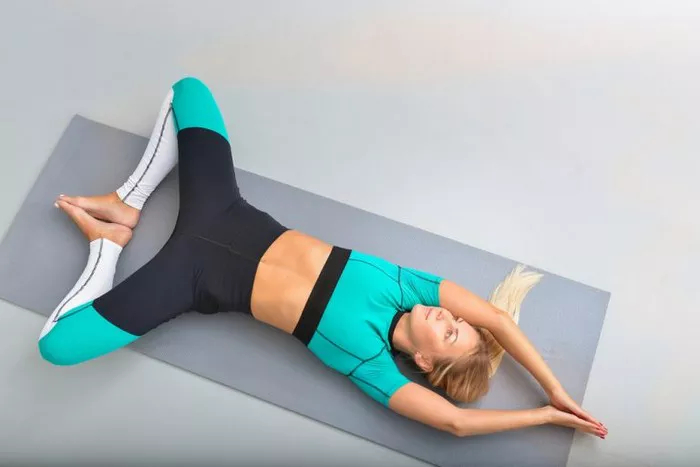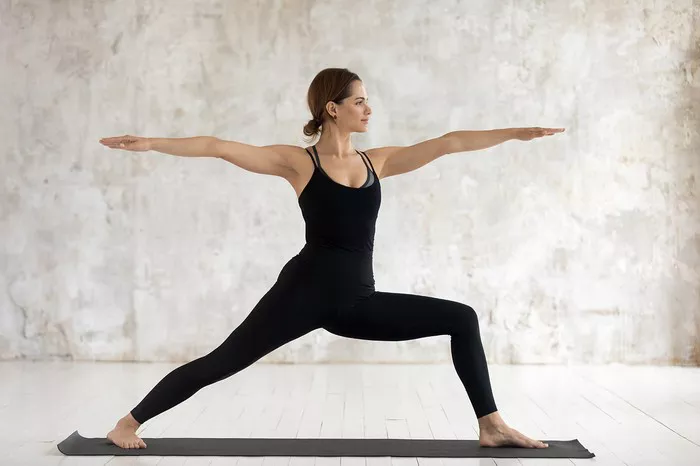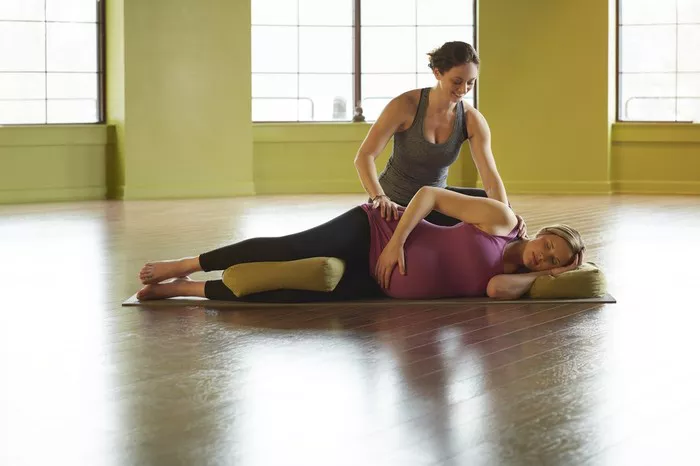Yoga is a holistic practice that brings balance, strength, flexibility, and calm to the body, mind, and spirit. Among the wide range of asanas (yoga poses), the Bridge Pose (Setu Bandhasana) stands out as one of the most beneficial and accessible. Whether you are a seasoned yogi or a beginner, understanding the benefits of the Bridge Pose can inspire you to incorporate it into your regular yoga practice. This article delves into the various physical, mental, and emotional benefits of the Bridge Pose, the correct alignment, variations, and tips for getting the most out of the pose.
What is the Bridge Pose (Setu Bandhasana)?
The Bridge Pose, or Setu Bandhasana in Sanskrit, is a reclining backbend pose that targets the spine, hips, and chest. The name comes from the word “Setu,” which means “bridge,” and “Bandha,” which means “lock” or “band.” In this asana, the body forms a bridge-like shape, with the legs, shoulders, and feet supporting the body as the hips are lifted towards the sky.
The pose may look simple at first glance, but its many benefits make it a powerful tool in both beginners’ and advanced practitioners’ yoga routines.
Step-by-Step Instructions for the Bridge Pose
Before exploring the benefits of the Bridge Pose, let’s look at how to perform it correctly:
Starting Position: Lie down on your back with your knees bent and feet flat on the floor, hip-width apart. Your arms should rest alongside your body with the palms facing down.
Engage the Core: Press your feet into the floor and gently engage your core muscles. This will help stabilize your pelvis as you begin to lift your hips.
Lift the Hips: As you inhale, press through your feet and slowly begin to lift your hips off the ground, aiming to create a straight line from your shoulders to your knees. Keep your shoulders and arms relaxed, and avoid putting pressure on your neck.
Position the Hands: You can either keep your arms extended alongside your body, palms facing down, or clasp your hands beneath your back for extra support and to deepen the chest opening.
Hold and Breathe: Hold the pose for several breaths, ensuring that you maintain a steady and deep breathing pattern. Keep your legs and hips active throughout the hold to prevent any collapse in the lower back.
Release: To release the pose, slowly lower your hips back to the floor on an exhalation. Rest for a few breaths before repeating or moving to another pose.
Physical Benefits of the Bridge Pose
The Bridge Pose offers numerous physical benefits that support the health and well-being of the entire body. Here are some of the primary physical advantages:
1. Strengthens the Lower Body
The Bridge Pose is an excellent way to strengthen the muscles in the legs and glutes. The quadriceps, hamstrings, calves, and hip flexors all engage as you press your feet into the floor and lift your hips. These muscles work to support the lifting motion, helping to tone and build strength in the lower body.
By engaging your glutes and hamstrings while lifting the hips, you develop strength and endurance, which can contribute to improved balance and posture both on and off the mat. Over time, this strength-building aspect of the pose can lead to better stability in activities such as running, walking, and climbing stairs.
2. Opens the Chest and Shoulders
One of the most remarkable benefits of the Bridge Pose is its ability to open up the chest and shoulders. As you lift your hips and press your chest upward, the sternum lifts, and the heart opens. This action helps stretch the chest, particularly the pectoral muscles and the muscles around the shoulder joints.
In a world where many people spend long hours hunched over desks or looking down at phones, the Bridge Pose helps counteract the forward rounded posture and improve overall posture. It opens up the front of the body and encourages a more upright, expansive posture.
3. Strengthens the Back
The Bridge Pose targets the muscles of the back, including the erector spinae and the latissimus dorsi. These muscles support the spine and assist with maintaining posture. When practiced regularly, the Bridge Pose helps improve spinal alignment and strengthens the back muscles, which in turn helps alleviate back pain caused by poor posture or sedentary lifestyles.
The action of lifting the hips in the Bridge Pose also promotes mobility in the spine and can help improve flexibility in the back. This can be especially beneficial for individuals who spend long periods sitting, which tends to stiffen the lower back and hips.
4. Stretches the Hip Flexors
In addition to strengthening the muscles of the lower body, the Bridge Pose also stretches the hip flexors. These muscles are located at the front of the hips and can become tight and shortened from prolonged sitting. When you lift your hips in Bridge Pose, you create a stretch across the hip flexors, promoting flexibility and lengthening in this area.
Regular stretching of the hip flexors through poses like Bridge can reduce tightness in the hips, improve hip mobility, and help prevent discomfort in the lower back and pelvis.
5. Improves Core Strength
Although the Bridge Pose primarily targets the lower body, it also engages the core muscles. The abdominal muscles, particularly the rectus abdominis and the obliques, work to stabilize the torso and protect the lower back as the hips are lifted.
Strengthening the core is crucial for maintaining overall stability and balance. A strong core also reduces the risk of back injuries, improves posture, and supports functional movements in daily life.
6. Relieves Lower Back Pain
The Bridge Pose is widely recognized for its ability to help alleviate lower back pain. By engaging the glutes, strengthening the lower back, and improving spinal alignment, it reduces strain on the lower back and can help counteract the discomfort caused by sitting for extended periods.
Additionally, the gentle backbend action of the Bridge Pose can create space between the vertebrae, helping to release tension and improve circulation in the lower back.
7. Improves Circulation
By lifting the hips and engaging the muscles of the lower body, the Bridge Pose encourages blood flow throughout the body, particularly to the heart and legs. This can be especially beneficial for those who experience poor circulation, as it helps pump blood more effectively throughout the body.
The inversion aspect of the pose, where the heart is higher than the head, also helps promote healthy circulation by encouraging blood to flow downward from the upper body and back to the heart.
Mental and Emotional Benefits of the Bridge Pose
While the physical benefits of the Bridge Pose are clear, this asana also offers several mental and emotional advantages that enhance the yoga practice as a whole. These benefits can help cultivate mindfulness, emotional balance, and stress reduction.
1. Relieves Stress and Tension
The Bridge Pose, like many other yoga poses, promotes relaxation by stimulating the parasympathetic nervous system, which is responsible for the “rest and digest” response. By holding the pose and focusing on your breath, you activate the body’s natural relaxation mechanisms, reducing stress and tension both physically and mentally.
The heart-opening aspect of the pose can also help release pent-up emotions or energy, creating a sense of emotional freedom. The soothing nature of the pose encourages a sense of calm and tranquility, allowing you to let go of mental clutter and relax into the present moment.
2. Boosts Mood and Energy
Engaging in physical activity, including yoga poses like the Bridge Pose, triggers the release of endorphins, the body’s natural mood-boosting hormones. By practicing the Bridge Pose, you may experience an uplift in your mood and an increase in overall energy levels.
The expansive, uplifting nature of the pose can create a sense of vitality, helping to combat feelings of lethargy or low energy. It encourages a positive shift in perspective, making it a great practice for those struggling with feelings of fatigue or low motivation.
3. Improves Focus and Mental Clarity
The Bridge Pose encourages a mind-body connection, as you must concentrate on aligning your body, engaging the appropriate muscles, and maintaining steady breathing. This mindfulness aspect of the pose can help improve focus and mental clarity, as it encourages you to stay present and tune into the sensations of your body.
This mental clarity extends beyond the practice of yoga and can be applied to daily life, helping you make decisions with greater focus and composure. As you practice regularly, you may notice an improvement in your ability to stay centered amidst external distractions.
4. Enhances Breathing and Lung Capacity
When practiced correctly, the Bridge Pose opens the chest and encourages deeper breathing. The expansion of the ribcage as you lift the chest helps to increase lung capacity and improve overall respiratory function. This deep, mindful breathing can be both calming and invigorating, making the pose an excellent way to promote mental focus and emotional balance.
5. Balances the Root and Heart Chakras
In yoga philosophy, the body’s energy centers are called chakras. The Bridge Pose is believed to activate both the Root Chakra (Muladhara) and the Heart Chakra (Anahata). The Root Chakra is associated with stability, grounding, and safety, while the Heart Chakra is linked to love, compassion, and emotional healing.
By working with both of these chakras, the Bridge Pose fosters a sense of security and emotional openness. It can help release emotional blockages and promote a sense of inner peace and compassion, both for oneself and others.
Variations and Modifications of the Bridge Pose
While the standard Bridge Pose is accessible to many practitioners, there are variations and modifications that can help tailor the pose to different levels of experience and ability.
1. Supported Bridge Pose (Setu Bandhasana with Props)
For beginners or those who have limited flexibility, using props such as a block or bolster can provide support and make the pose more accessible. Placing a block under the sacrum or hips can help lift the pelvis without straining the lower back.
2. Wheel Pose (Urdhva Dhanurasana)
For more advanced practitioners, transitioning from the Bridge Pose to Wheel Pose (Urdhva Dhanurasana) can deepen the backbend and increase the intensity of the heart-opening action. The Wheel Pose is an advanced version that requires greater flexibility and strength in the spine and shoulders.
3. One-Legged Bridge Pose
This variation involves lifting one leg while keeping the hips lifted in the standard Bridge Pose. It adds an extra challenge by engaging the core and working the legs unilaterally, further enhancing stability and balance.
4. Knee-to-Chest Bridge Pose
In this modification, you gently bring one knee toward the chest while keeping the other leg active and lifted. This can be used to deepen the stretch in the back while also engaging the core for added balance.
Conclusion
The Bridge Pose (Setu Bandhasana) is a versatile and accessible yoga asana that offers a wealth of physical, mental, and emotional benefits. Whether you are seeking to strengthen your body, improve your posture, release tension, or foster a sense of inner peace, this pose provides an all-encompassing solution. By incorporating the Bridge Pose into your regular yoga practice, you can experience a wide range of benefits that support overall health and well-being.
With its simple yet powerful structure, the Bridge Pose reminds us of the importance of balancing strength and flexibility, stability and openness. It is a pose that cultivates both physical vitality and mental clarity, leaving practitioners feeling more grounded, expansive, and at ease in their bodies.
Related Topics:























